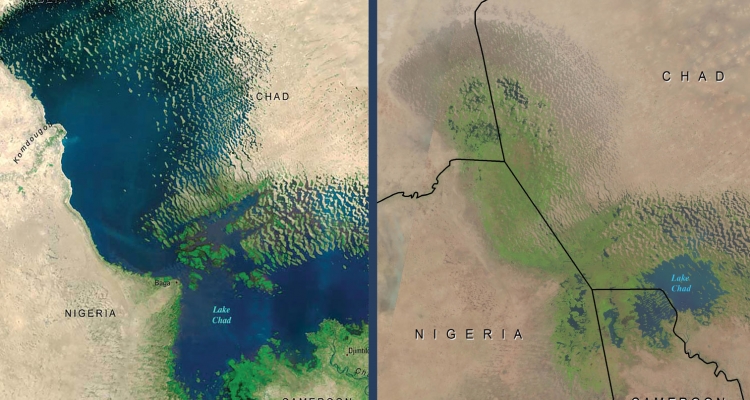Blog
Lake Chad is disappearing. How can we save it?
Lake Chad is a water source for 30 million people. The lake is gradually shrinking and its only hope is a rather divergent project.

Lake Chad covered 26,000 square kilometers in surface area in 1963. Guess by how much it has plummeted.
The vast area shrank by 90% in a few decades to 1,500 square kilometers.
No wonder that the United Nations has termed the Lake Chad crisis as “one of the worst in the world”. Furthermore, the disappearing lake is more than an environmental issue, affecting millions of people for whom it is the only source of freshwater.
Low precipitation and high criminality
Lake Chad is located at the conjunction of Chad, Cameroon, Nigeria, and Niger. It is home for 17.4 million people, however, it provides water to 30 million. And it is not just a source of drinking water.
It allows for fishing, livestock feeding, irrigation, and other forms of support to agriculture. Millions of people depend on it and water scarcity causes the so-called water stress.

The region, which was originally a rainy-and-wet-season area, has dramatically changed. The temperature rose 1.5x faster than the global average and the precipitation decreased.
Dry seasons are so extreme that when it suddenly starts to rain, the precipitation cannot compensate for the water scarcity.
And that is not the only problem. The crisis is also fuelled by armed conflicts on a daily basis.
The herdsmen and farmers have to fight for water. Furthermore, the region is terrorized by the Boko Haram group.
You might ask how this affects water sources. Access to Lake Chad is controlled by terrorists who control everything that happens in the region. As you might think, this also has a negative impact on water testing and recovery.
Furthermore, the World Bank suggests that we might have the information on water dynamics, groundwater, and surface water, but no one has ever used them for better water management.
Hope dating back to the 1980s
So is the current situation. Now, let’s go back to the 1980s when the Transaqua plan was created.
At that time, Italian engineering company Bonifica came up with a plan to construct a 2,400km canal.
“I sent one of our engineers to the USA, to purchase reliable maps of Africa, which were made by the US Air Force ," reminisces Marcello Vichi, the Italian engineer who worked on the project.
The canal would transfer up to 100 billion cubic metres of water a year from the mighty Congo River all the way to the Chari River basin which feeds Lake Chad. It would not only supply the lake with water, but also featured a series of dams along the route to generate electricity, helping the local economy.
Bonifica said its plan would use less than 8% of the water the Congo River otherwise discharges into the Atlantic. This might surprise you but neither governments of African countries nor financial groups made any response.
Three decades later, they surprisingly started to focus on the Transaqua project. Even though the Lake Chad Basin Commission approved the plan in 2018, it's to this day not sure whether the canal will be built.
No solution in sight
Transaqua canal has many proponents as well as opponents. Nigeria, for instance, says there is no time to waste and the canal should be constructed to restore the economy in the Lake Chad basin.
Otherwise, the humanitarian crisis will continue and the people will migrate to other regions. The U.N. also advocates watering the lake to reverse the crisis.

Lake Chad, 2019, shot from space
Unlike Nigeria, PowerChina, a company building water plants,African Development Bank, and the rest of the surrounding countries support the project.
However, the Transaqua project still has many opponents, such as Congo, where the canal would also run. Congo declares that they were not approached to discuss the project.
Some scientists also fear that the canal would harm the environment in the Congo and Chari River basin.
And there are also safety barriers. The construction of the canal requires peace.
If peace is not achieved, Transaqua remains only a plan.
The worst thing is that, while many stakeholders waste time arguing, people living around Lake Chad still suffer.
49 million people lost their livelihood in 2009 due to poor fishing. The total of 10 million people need humanitarian aid and half a million children are suffering from severe acute malnutrition.
You can surely imagine how serious the situation is and the extent to which the locals need freshwater provided by the lake years ago.
Cover photo retrieved from: Un.org
More articles
These water protection campaigns have a strong message for all of us
Their purpose is to draw attention to serious facts about the lack of water and its pollution, the protection of drinking water resources, but also...
7 simple tips how to combat water pollution by plastic waste
Researchers have discovered small plastic particles also in Slovak drinking water sources.
